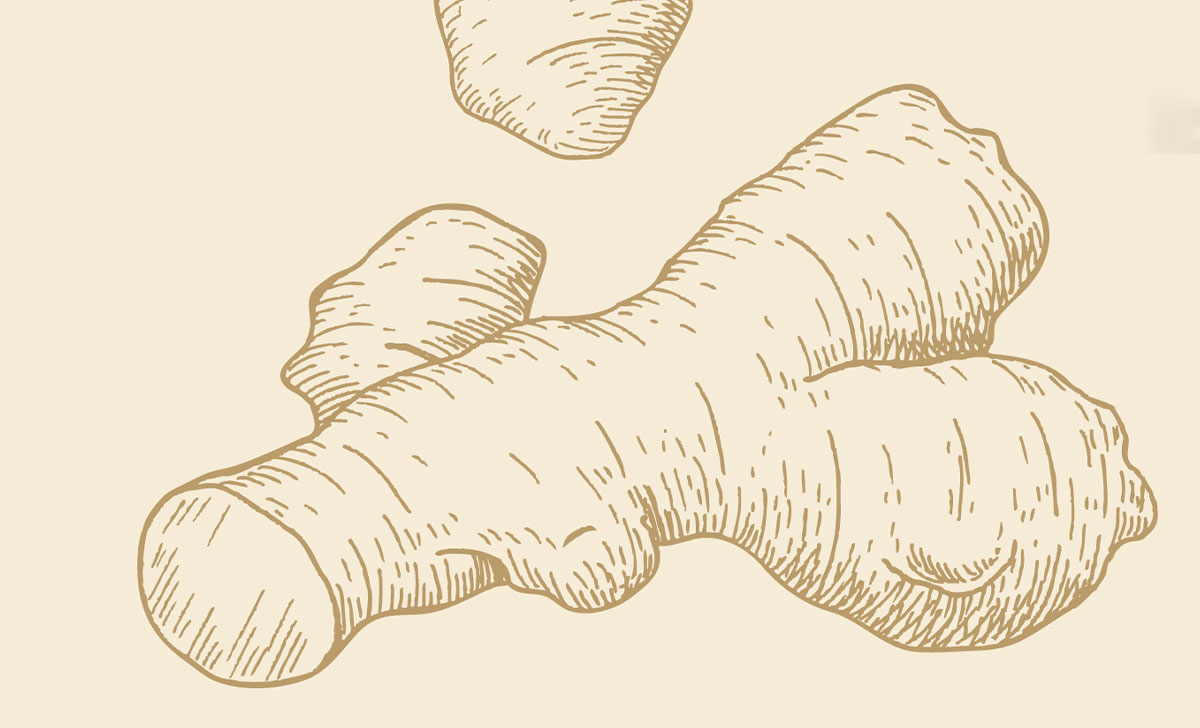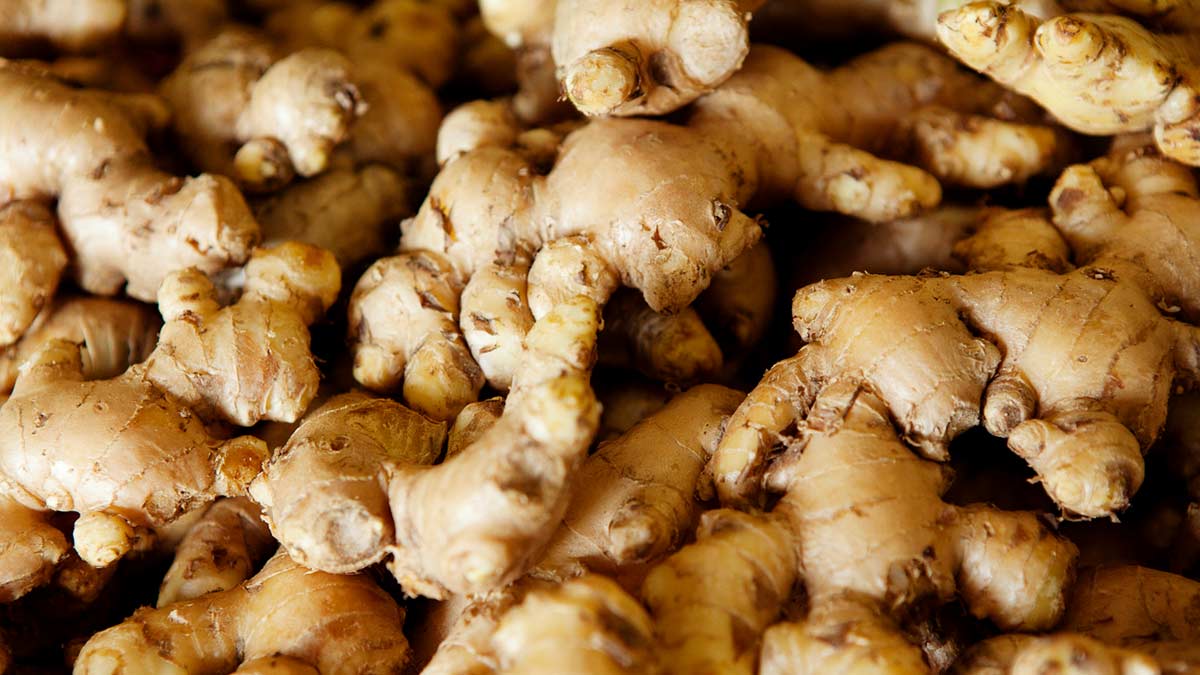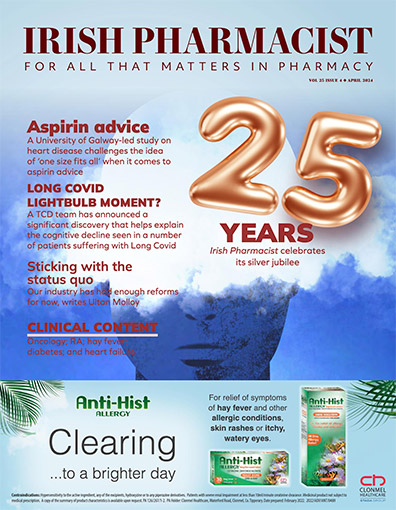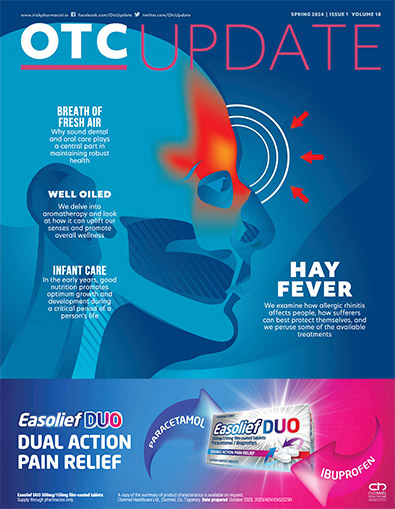DR DES CORRIGAN EXAMINES THE EVIDENCE FOR THE ROLE OF GINGER IN ARTHRITIC CONDITIONS
Ginger is one of my favourite dual-purpose medicinal/ spice plants. I love the smell and pungency of it when used in cooking, especially in Thai dishes. It has also been ever reliable for preventing travel sickness on ferry journeys from Ireland to France — a reassuring example of the replication of clinical trial evidence under real-world conditions. I have been more sceptical about claims for ginger in other conditions, notably arthritis. However, the recent publication of a number of systematic reviews has seriously challenged that scepticism. All of the reviews date from 2020 and three of them appeared in Phytotherapy Research.
The first was a systematic review and metaanalysis of clinical trials on the effect of ginger on markers of inflammatory and oxidative stress, such as C-Reactive Protein (CRP), Tumour Necrosis Factor-? (TNF-?), Interleukin- 6 (IL-6), Prostaglandin E2 (PGE 2), total antioxidant capacity (TAC) and malondialdehyde. The review covered 19 separate studies involving 446 patients given ginger and 442 patients in control groups. Most of the studies were conducted in Iran, but four were done in the USA. The meta-analysis revealed a statistically significant effect of ginger on CRP, TNF-?, IL-6, TAC and malondialdehyde levels compared to controls. The effect on PGE2 levels was marginally significant.
The authors did not, as is the norm in many such reviews, have the courage to say that ginger was effective; instead, they stated that further large well-designed studies were warranted. I often wonder if authors are fearful that their paper might be rejected if they do not include this caveat? A second paper by Italian researchers in the same journal was a narrative review of trials on the pain-lowering effect of ginger. It pointed out that ginger has been used as pain relief for osteoarthritis, delayed-onset muscle soreness (DOMS), chronic low-back pain, dysmenorrhoea, and migraine.
They evaluated nine RCTs involving 964 patients with osteoarthritis of the knee in which ginger was administered either orally or topically. The results were inconclusive, with two studies showing benefits, but others indicating no effect. Trials with ginger essential oil applied topically seem to have given better results and the authors note that combination products were also effective. The problem there, of course, lies in disentangling the effects of ginger from those of the other ‘botanicals’, especially if one of those was turmeric.
The six studies in patients with dysmenorrhoea “suggest a promising effect”, while those in cases of DOMS indicate a reduction in exerciseinduced inflammation. In the case of chronic low-back pain, a combination of ginger oil and Swedish massage (no sniggering at the back of the class please!) reported a reduction in symptoms. The authors speculate on mechanisms of action such as inhibition of prostaglandin synthesis, antioxidant activity, vanilloid nociceptor agonist activity, or inhibition of the transcription factor nuclear NF-kB, which is known to be the principal regulator of pro-inflammatory gene expression detectable at sites of inflammation. However, given their call for further studies to clarify this pain-lowering impact, such speculation seems premature, even though they do conclude that the use of ginger is safe and promising. A 2019 paper in the journal Gene reported on the effect of ginger on some immunity and inflammation intermediate gene expression in 35 patients with active rheumatoid arthritis given ginger (1.5g) daily for 12 weeks.
Compared to placebo, ginger improved rheumatoid arthritis by decreasing disease manifestation. It did so by increasing some genes’ expression relating to immunity and inflammation, and decreasing others. Unfortunately, NF-kB was not one of those significantly affected. In 2020, the journal Pain Physician published a PRISMA systematic review and meta-analysis of the effectiveness of ginger on pain and function in knee osteoarthritis (OA). I have to confess that a PRISMA review was new to me and I had to Google it for a description. I learned that the initials stand for ‘Preferred Reporting Items for Systematic Reviews and Meta-Analyses’ and that it is an evidence-based set of items aimed at helping reviewers report a wide range of systematic reviews assessing the benefits of a given healthcare intervention. So, it’s just a superduper review! Anyway, this paper found seven RCTs that were eligible for inclusion involving 371 patients with OA of the knee.
Their overall conclusion was that there was insufficient evidence to support the use of oral ginger compared to placebo in respect of pain relief and function improvement. Now, this conclusion confused me because at the beginning of the ‘Results and Discussion’ section, the authors wrote “for pain relief, our findings are consistent with the study by Bartels et al in which they showed that ginger intake produced a statistically significant pain reduction in patients with knee and hip OA”. In trying to avoid confusing you, I went back to that publication by Bartels from 2015 in the journal Osteoarthritis and Cartilage to see what exactly they found. This was a meta-analysis of the safety and efficacy of the plant in OA patients.
They included five trials with 593 patients in their analysis. In addition to the significant effect on pain, there was also a statistically significant reduction in disability. These particular authors concluded that ginger was modestly effective, although they pointed out the low quality of many of the trials. The journal Nutrients published a systematic review of spice supplementation in rheumatoid arthritis that included just one trial of ginger given twice daily at a dose of 750mg to 63 patients. There was a significant decrease compared to placebo in the Disease Activity Score-28 and in the Erythrocyte Sedimentation Rate (ESR), and in the level of a second inflammatory marker C-Reactive Protein (CRP).
This was a meta-analysis of the safety and efficacy of the plant in OA patients
Similar effects on ESR and CRP were reported in the Journal of Pain Research (2020) when a lecithin formulation of a standardised ginger extract in combination with another plant Acmella oleracea (traditionally used against toothache pain due to a compound with demonstrable analgesic effects) in 50 patients with moderate OA of the knee. In addition to the significant effects on the standard inflammatory markers, there were also positive impacts on the WOMAC Index, on the Tegner Lysholm Knee Scoring and on pain intensity measured via a VAS. Overall, it seems to me that the use of ginger in early-onset moderate OA could benefit patients before they start needing steroid injections or surgery.
However, I must point out that OA is not one of the indication claims accepted by the EMA in its monograph on ginger. There is a Well-Established Use indication for the prevention and treatment of nausea and vomiting, as well as a traditional use indication for travel sickness, and another for symptomatic relief of bloating and flatulence. This lack of an EMA imprimatur needs to be borne in mind if you are asked for advice by a patient wishing to choose a ginger-based product for pain and inflammation.
CONTRIBUTOR INFORMATION
Dr Des Corrigan, Best Contribution in Pharmacy Award (winner), GSK Medical Media Awards 2014, is a former Director of the School of Pharmacy at TCD and won the Lifetime Achievement Award at the 2009 Pharmacist Awards. He was chair of the Government’s National Advisory Committee on Drugs from 2000 to 2011. He currently chairs the Advisory Subcommittee on Herbal Medicines and is a member of the Advisory Committee on Human Medicines at the IMB. He is a National Expert on Committee 13B (Phytochemistry) at the European Pharmacopoeia in Strasbourg and he is an editorial board member of the Journal of Herbal Medicine and of FACT — Focus on Alternative and Complementary Therapy.







